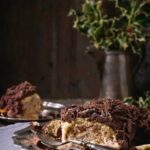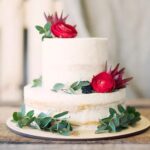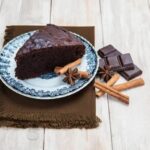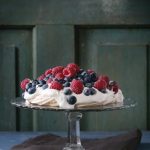What is piping gel used for in cake decorating? Piping gel is a versatile and essential medium in the world of cake decoration. It is a clear, jelly-like substance that is often used to create various effects and designs on cakes. In this article, we will explore the uses, properties, and benefits of piping gel in cake decorating, as well as tips and techniques for using it effectively.
Piping gel is primarily composed of corn syrup, water, and some form of thickening agent such as agar or pectin. It has been widely used in cake decorating for many years and has become an indispensable tool for bakers and decorators alike. Its unique texture and viscosity make it ideal for creating intricate designs and achieving specific effects on cakes.
In addition to its use as a design element, piping gel also serves practical purposes in cake decorating. It can act as an adhesive for attaching edible decorations to the surface of a cake, or be used to achieve glossy or transparent finishes. The versatility of piping gel makes it a valuable asset for decorators who are looking to add depth, dimension, and creativity to their confections.
Properties and Consistency of Piping Gel
Piping gel is a versatile and essential tool in cake decorating. It is a clear, thick, and viscous gel that is commonly used to create a variety of effects on cakes, pastries, and other confections. Typically made from water, sugar, corn syrup, and a gelling agent such as agar or pectin, piping gel has been a staple in the world of cake decorating for many years.
One of the key characteristics of piping gel is its unique texture and consistency. It has a smooth and glossy appearance with a slightly sticky feel. The viscosity of piping gel allows it to be easily spread or piped onto cakes without running or dripping excessively. This makes it ideal for creating intricate designs, patterns, or even writing on cakes. Additionally, the transparent nature of piping gel makes it perfect for achieving water or glass-like effects on decorations.
Uses of Piping Gel in Cake Decorating
What is piping gel used for in cake decorating? Piping gel has a wide range of applications in the realm of cake decoration. Its ability to create water or glass-like effects makes it perfect for adding realistic details to ocean-themed cakes, floral arrangements, or even stained glass patterns on desserts. Additionally, piping gel can be used as an adhesive for attaching edible decorations such as fondant flowers or sugar pearls onto cakes.
| Piping Gel Properties | Uses in Cake Decorating |
|---|---|
| Smooth and glossy texture | Creating water or glass-like effects |
| Viscous consistency | Attaching edible decorations onto cakes |
| Transparent appearance | Adding realistic details to themed cakes |
Overall, piping gel provides decorators with endless possibilities when it comes to adding intricate details and designs to their creations. Its versatility and ease of use make it a must-have tool for any baker’s toolkit.
Uses of Piping Gel in Cake Decorating
Piping gel is a versatile and essential tool in cake decorating, offering decorators the ability to create a wide range of stunning effects and designs. From mimicking water to creating realistic glass-like elements, piping gel adds depth and dimension to any cake. This section will explore the myriad of uses for piping gel in cake decorating, providing valuable insight into how this unique medium can elevate any baked creation.
Creating Water Effects
One of the most popular uses of piping gel in cake decorating is its ability to replicate water. Whether it’s a serene pond or a cascading waterfall, piping gel can be tinted with food coloring to achieve lifelike water effects on cakes. By applying layers of tinted piping gel strategically, decorators can achieve a stunning illusion of depth and movement, creating visually captivating scenes that bring cakes to life.
Simulating Glass-Like Elements
Piping gel is also frequently used to create striking glass-like elements on cakes. By applying a thin layer of clear piping gel over specific areas of the cake, decorators can achieve the appearance of transparent or reflective surfaces such as windows, mirrors, or even glistening ice. This technique adds an impressive level of realism and sophistication to cake designs, making them truly stand out as works of art.
Adding Texture and Dimension
In addition to its specialty effects, piping gel can also be used for adding texture and dimension to various decorations on cakes. Whether it’s enhancing the shine on fondant accents or creating subtle details like dew drops or bubbles, piping gel offers decorators an opportunity to elevate their designs with intricate touches that make a lasting impression.
By incorporating piping gel into their repertoire, cake decorators have at their disposal a valuable tool that allows them to bring their creative visions to life with stunning realism and artistry.
Benefits of Using Piping Gel
Piping gel is a versatile and essential tool in cake decorating, offering a wide range of benefits that set it apart from other mediums. Understanding the advantages of using piping gel can help decorators make informed decisions about when and how to incorporate this valuable ingredient into their projects.
Some key benefits of using piping gel in cake decorating include:
1. Transparency: Piping gel is known for its clear and transparent appearance, making it an ideal choice for creating water or glass-like effects on cakes. Its ability to mimic the look of water or glass adds a dynamic and visually stunning element to cake designs.
2. Adherence: Piping gel has strong adherence properties, making it an excellent medium for securing edible decorations onto the surface of a cake. Whether attaching fondant accents or edible images, piping gel provides a reliable way to ensure that decorations stay in place.
3. Versatility: Piping gel offers decorators the flexibility to achieve a variety of effects and designs. From creating subtle glazes to intricate detailing, piping gel can be used in combination with other decorating techniques such as painting, airbrushing, or sculpting.
Incorporating piping gel into cake decorating projects opens up a world of creative possibilities, adding depth, dimension, and visual interest to edible creations.
Tips and Techniques for Using Piping Gel
Piping gel is a versatile and essential tool in the cake decorating world, offering a wide range of applications and effects. When used correctly, piping gel can create stunning and realistic designs on cakes, making it a popular choice for professional decorators and home bakers alike.
One of the most common uses of piping gel in cake decorating is to create water or glass-like effects. This is achieved by tinting the piping gel with food coloring and carefully applying it to the surface of the cake. The translucent nature of piping gel makes it an ideal medium for simulating water, adding dimension to underwater-themed cakes, or creating the illusion of condensation on glass-like surfaces.
In addition to creating water effects, piping gel can also be used to affix edible decorations onto cakes. Its slightly sticky texture allows for precise placement of items such as edible pearls, sequins, or delicate sugar flowers. Piping gel serves as a safe and edible “glue” that securely holds these decorations in place without damaging the cake’s surface.
For those new to using piping gel in cake decorating, there are several techniques that can help achieve different effects and designs. One common method involves using a small amount of piping gel underneath fondant decorations to add shine and depth. Another technique is using piping gel to transfer printed images onto cakes for a professional-looking finish.
| Uses | Effects |
|---|---|
| Creating water or glass-like effects | Simulating water or condensation on glass-like surfaces |
| Affixing edible decorations onto cakes | Holding edible pearls, sequins, or sugar flowers in place without damaging the cake’s surface |
| Transferring printed images onto cakes | Adding shine and depth to fondant decorations |
Piping Gel Recipes and DIY Options
One of the most common questions in cake decorating is “what is piping gel used for in cake decorating?” Piping gel is a versatile and essential tool in the world of cake decorating. It can be used for a wide variety of effects, including creating water or glass-like effects, adding shine to decorations, and even acting as an adhesive for edible decorations.
While piping gel can easily be purchased at most baking supply stores, some decorators may prefer to make their own piping gel at home. By making your own piping gel, you can customize the color and flavor to fit your specific design needs. One popular recipe for homemade piping gel includes simple ingredients such as water, cornstarch, sugar, and clear extract flavoring. This allows decorators to have more control over the consistency and properties of their piping gel.
For those who prefer a vegan or allergy-friendly option, there are also alternative recipes for creating piping gel using ingredients such as agar-agar or tapioca starch. These DIY options offer flexibility for decorators with dietary restrictions or preferences, allowing them to still achieve stunning effects in their cake decorating projects.
Overall, whether using store-bought or homemade piping gel, this versatile medium opens up a world of possibilities in cake decorating. From creating realistic water effects to adding sparkle and shine to decorations, piping gel is an indispensable tool for both amateur and professional decorators alike.
Piping Gel in Combination With Other Cake Decorating Tools
When it comes to cake decorating, piping gel can be a versatile and valuable tool that complements various other techniques and mediums. Whether you are working with fondant, royal icing, or other cake decorating tools, piping gel can enhance the overall design and create stunning effects on your cakes.
Enhancing Fondant Designs
One of the common uses of piping gel in combination with fondant is to add intricate details and textures to the surface of the cake. By mixing piping gel with food coloring or edible dust, decorators can create beautiful painted designs on fondant-covered cakes. Additionally, piping gel can be used as an adhesive for attaching fondant pieces or decorations onto the cake, ensuring that they stay in place.
Complementing Royal Icing Techniques
Royal icing is often used to create intricate lace patterns, delicate piping work, and 3D decorations on cakes. Piping gel can be incorporated into royal icing to adjust its consistency and achieve different effects. For instance, by adding small amounts of piping gel to royal icing, decorators can create a glossy finish or soften the texture for smoother lines and details.
By combining piping gel with other cake decorating tools such as edible paints, airbrushing equipment, or stencils, decorators can elevate their designs and add depth and dimension to their creations. The translucent nature of piping gel allows for unique effects such as creating water droplets or realistic glass-like windows on cakes.
Overall, knowing how to effectively use piping gel in conjunction with other cake decorating tools opens up a world of creative possibilities for decorators. Experimenting with different combinations and techniques can lead to stunning results that truly stand out in the world of cake decoration.
Conclusion and Recommendations
In conclusion, piping gel is a versatile and essential tool in the world of cake decorating. Its unique properties and consistency make it ideal for creating a wide range of effects, from water to glass-like designs.
The benefits of using piping gel, such as its clear and glossy finish, set it apart from other mediums commonly used in cake decorating. Furthermore, the ability to combine piping gel with other tools and techniques opens up endless possibilities for creative and visually stunning cake designs.
For those new to cake decorating or looking to expand their skills, incorporating piping gel into future projects comes highly recommended. Whether experimenting with different textures or aiming for a specific effect, piping gel offers cake decorators a valuable tool that can elevate their creations to the next level. With detailed instructions and tips available on how to use piping gel effectively, even beginners can easily master this versatile medium and achieve professional-looking results.
Overall, the uses of piping gel in cake decorating are limitless, making it an indispensable ingredient for every decorator’s toolkit. From creating realistic water scenes to adding a shiny finish to fondant designs, the possibilities with piping gel are truly endless. By understanding its properties and potential applications, cake decorators can take their creations to new heights with the help of this invaluable tool.
Frequently Asked Questions
What Is the Purpose of Piping Gel?
The purpose of piping gel is to create a clear, shiny, and adhesive surface on baked goods. It is commonly used in cake decorating to make designs, adhere edible decorations, and add a glossy finish.
What Is the Difference Between Edible Glue and Piping Gel?
The main difference between edible glue and piping gel is their consistency and purpose. Edible glue is thicker and used to glue together fondant pieces or attach heavier decorations, while piping gel is thinner and used for creating designs or adding a shiny finish.
How Do You Decorate a Cake With Piping Gel?
To decorate a cake with piping gel, start by applying a thin layer of the gel onto the surface of the cake using a brush or spatula. Then, use different colors of piping gel to create designs, patterns, or writing on the cake.
You can also mix food coloring with the piping gel for added decoration possibilities. After decorating, allow the piping gel to set before serving the cake.

Welcome to my blog about home and family. This blog is a place where I will share my thoughts, ideas, and experiences related to these important topics. I am a stay-at-home mom with two young children. I hope you enjoy reading it! and may find some helpful tips and ideas that will make your home and family life even better!





